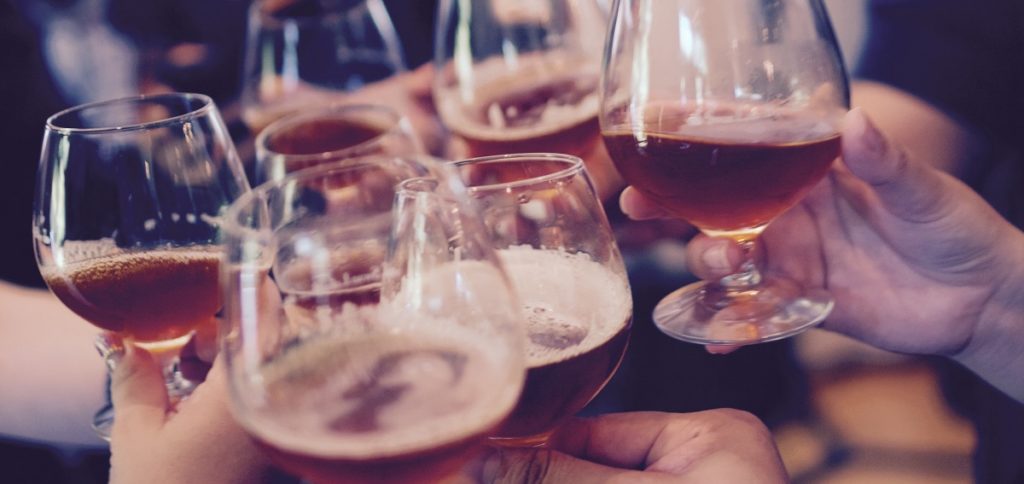Bock beer renaissance

It seems there’s no stopping the current trend for regional and specialty beers. And for several years now, bock beers have been no exception. Demand for strong beers is growing.
Bock beers are a firm fixture on the retail and hospitality and catering scenes. They quench consumers’ thirst for regional specialty beers and provide a welcome change in terms of taste. Strong beers are particularly popular during the colder months of the year. In medieval times, their higher alcohol content meant that they kept very well. This beer type originated in the German town of Einbeck in Lower Saxony. Beer from Einbeck (known as “Ainpöckisch Bier”) was seen as a luxury in medieval times and was sold far and wide beyond the confines of the town. It was brewed to be stronger to ensure that it would keep when transported over long distances. Over time, its name changed to “Ainpöck” and then subsequently “Bockbier” (bock beer). The name is, therefore, the oldest term for beer with high alcohol content.
Pilsner brewer discovers bock beer
Classic pilsner breweries such as Einbecker, Paulaner and Andechser are now brewing bock beer alongside traditional bock beer breweries. As such, in fall 2019, the Bitburger Brewery launched the Bitburger Winterbock, available for a limited time only, a seasonal light bock beer with 7% alcohol content. This is the very first seasonal product in the history of the Bitburger Brewery Group. “We are responding to consumer demand for variety and diversity during the winter months with a full-bodied yet smooth beer,” says Marketing Director Frank Windau. Thanks to specifically selected hop varieties and cold storage at -2°C lasting several weeks, they have managed to brew a pleasantly strong beer that is perfect for the colder months of the year, according to Windau.
Even Danish brewery Carlsberg has launched on the German market a new bock beer. In fall 2019, Carlsberg Germany introduced a smoky strong beer to its Duckstein range in the form of Rubin Bock. The aim was to stimulate new sales in the beverage industry in the run-up to Christmas. New bottle designs and displays are also expected to catch the attention of quality-conscious consumers. The bock beer gets is characteristically smoky flavor from smoked malt.
All strong beers and bock beers have one thing in common which is that, in accordance with the Beer Ordinance, they must have an original gravity (OG) of at least 16%. In the case of double bock beer, the original gravity (OG) must be at least 18%, according to the Bayerischer Brauerbund e.V. (Bavarian Brewers’ Association).
Eisbock (ice bock) revival
Weldebräu in Plankstadt has rediscovered an old recipe in the estate of its deceased brewmaster Hans Hirsch. It is now being given new life in the form of Kurpfalzbräu Eisbock. According to the legend, Eisbock was “invented” in the winter of 1890 in a brewery in Kulmbach. One winter evening, a brewer’s assistant decided that he’d had enough of moving the wooden barrels into the store room as requested by his brewmaster. The fierce frost froze the barrels which burst open. However, not all of the beer had frozen. A beer concentrate formed in the center of the barrel and had not turned to ice due to its high alcohol content. The concentrated malty and sweet low-water-content brew turned out to be delicious. And so Eisbock was born
The story spread like wildfire amongst brewing circles from Kulmbach to Munich and beyond. This is also how brewmaster Hirsch learned about this specialty beer when he did his training in Munich in winter 1918/1919. His legacy is being put to good use, explains Welde Managing Director Max Spielmann. A small quantity of Kurpfalzbräu Eisbock has been brewed, a pure and limited seasonal beer which tastes particularly good when the weather outside is cold and uninviting, says Spielmann. The Kulmbacher Brewery, which continues to feature an Eisbock in its portfolio, added a light bock beer to its Mönchshof Manufaktur line in 2018, an opal-cloudy specialty beer with a distinctively nutty caramel malt flavor. “Mönchshof Manufaktur Heller Bock” as it is called is available only during the strong beer season from October to March.
Branching out can work wonders

Karlsberg Brewery in Saarland is exploring new avenues for itself when it comes to bock beer and is hoping to generate new momentum by broadening its horizons. As such, in 2018 for the first time, the Karlsberg brewmasters visited their friendly counterparts at the Irish brewery O’Hara’s near Dublin to brew a dark bock beer there together. “Our Irish colleagues introduced us to their art of brewing and revealed some of their secrets to us. This broadened our horizons and was an invaluable experience,” says Karlsberg Brewmaster Martin Mihm. The second co-brew opportunity was at the start of February when the Karlsberg brewmasters traveled to Seattle to brew a light bock beer together with the experts at the Big Time Brewery. The brewmasters reported that in doing so they took this traditional type of beer to a whole new level.
All of these examples demonstrate that traditional bock beer is once again en vogue. It manages to perfectly quench consumers’ thirst for products that are both different and regional. The fact is that beers with a distinctive taste are becoming increasingly popular among consumers. With their intense flavors, bock beers are gaining more and more fans and are now popular all year round.
Anyone interested in finding out more about the special characteristics of specialty strong beers should visit the popular brewers meeting point “place2beer” as part of drinktec 2021. Here, an alternating range of beers from all over the world, including numerous bock beers, can be sampled free of charge every day of the trade fair across approximately 500 m2 of exhibition floor space. drinktec will be held from September 13 to 17, 2021, at the Munich trade fair.
